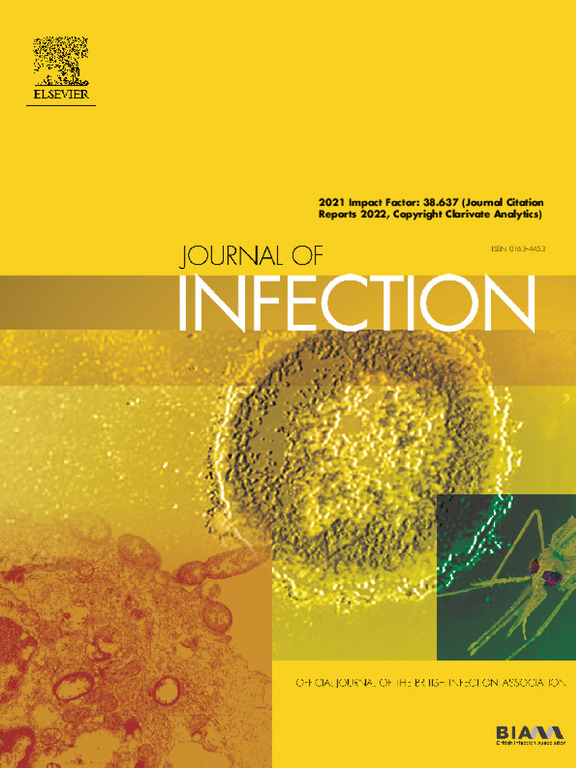Increased circulation of adenovirus in China during 2023-2024: Association with an increased prevalence of species B and school-associated transmission
IF 14.3
1区 医学
Q1 INFECTIOUS DISEASES
引用次数: 0
Abstract
Objectives
We report on the surge in human adenovirus (HAdV) cases in China starting in October 2023 and analyze the key drivers behind this increased circulation in the post-COVID-19 period.
Methods
We analyzed targeted next-generation sequencing (tNGS) data from 1,875,862 hospitalized acute respiratory infection (ARI) cases across 4758 hospitals in 314 cities throughout all 31 provinces of mainland China. An in-house script was used to analyze the positivity rates of different HAdV species nationwide and across various provinces. We also assessed the age-specific infection risk for HAdV species B and C using restricted cubic splines (RCS), and we tested differences in HAdV infection rates between vacation periods and school terms using the Kruskal–Wallis test.
Results
We identified an increased prevalence of HAdV species B replacing circulating species C, and this increase was associated with elevated HAdV activity in China from October 2023 to August 2024. Age-specific analysis indicates that, compared to HAdV species C, HAdV species B has a higher infection rate in school-aged children. Comparison of HAdV incidence rates during school terms and vacations showed that schools are the primary transmission setting for HAdV species B. These findings strongly support the conclusion that school-associated cluster infections caused by HAdV species B are the drivers of the ongoing increased circulation of HAdV in China.
Conclusion
This study found that changes in susceptible populations and transmission settings due to an increased prevalence of HAdV species B were the key factors driving the elevated HAdV activity in China starting in October 2023.
2023-2024年中国腺病毒传播增加:与B种流行和学校相关传播增加有关
目的:我们报告了从2023年10月开始中国人类腺病毒(hav)病例激增的情况,并分析了后covid -19时期这种病例增加背后的主要驱动因素。方法:我们分析了来自中国大陆31个省份314个城市的4,758家医院的1,875,862例急性呼吸道感染(ARI)住院病例的靶向下一代测序(tNGS)数据。采用内部脚本分析了全国和各省不同hav种类的阳性率。我们还使用限制性三次样条(RCS)评估了hav B和C种的年龄特异性感染风险,并使用Kruskal-Wallis测试了假期和学期之间hav感染率的差异。结果:研究人员发现,从2023年10月到2024年8月,中国乙型病毒性肝炎的流行率上升,取代了流行的丙型病毒性肝炎,这种上升与乙型病毒性肝炎的活动升高有关。年龄特异性分析表明,与hav C种相比,hav B种在学龄儿童中的感染率更高。在学校学期和假期期间,hav发病率的比较表明,学校是hav B种的主要传播场所。这些发现有力地支持了由hav B种引起的学校相关聚集性感染是中国hav传播持续增加的驱动因素。结论:本研究发现,从2023年10月开始,中国乙型病毒性肝炎易感人群和传播环境的变化是导致乙型病毒性肝炎疫情升高的关键因素。
本文章由计算机程序翻译,如有差异,请以英文原文为准。
求助全文
约1分钟内获得全文
求助全文
来源期刊

Journal of Infection
医学-传染病学
CiteScore
45.90
自引率
3.20%
发文量
475
审稿时长
16 days
期刊介绍:
The Journal of Infection publishes original papers on all aspects of infection - clinical, microbiological and epidemiological. The Journal seeks to bring together knowledge from all specialties involved in infection research and clinical practice, and present the best work in the ever-changing field of infection.
Each issue brings you Editorials that describe current or controversial topics of interest, high quality Reviews to keep you in touch with the latest developments in specific fields of interest, an Epidemiology section reporting studies in the hospital and the general community, and a lively correspondence section.
 求助内容:
求助内容: 应助结果提醒方式:
应助结果提醒方式:


